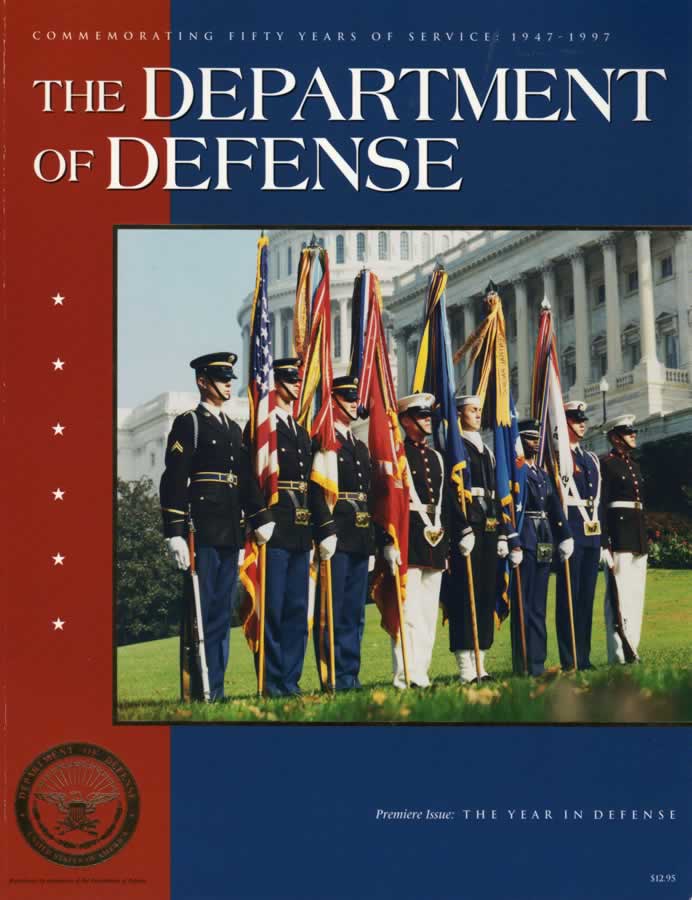Later army branches were the Signal Corps (1860), Chemical Corps (1918), Military Police (1941), Transportation Corps (1942), Military Intelligence (1962), Aviation (1983), Special Forces (1987), and Air Defense Artillery, now a separate branch, dates itself back to the earlier artillery too.
Along with arms and supplies from Europe, the colonists imported military talent. Baron von Steuben, a short, dour Prussian, offered his services. Steuben, a veteran of European campaigns, had assumed that he would be given command of a wing of the Continental army. But Washington had enough commanders, he needed someone who understood training and logistics. Steuben was probably disappointed but accepted the assignment and more than anyone else, made the Continental army into a fighting force.
In 1775, George Washington realized that his militias, while enthusiastic, were no match for a toe-to-toe slugfest with a European army. His policy for eight years was simply to keep the army intact and in the field. He knew that the English themselves were very divided about the war and reluctant to support a large armed force fighting a long way off, across a wide ocean. All he had to do was not lose--and wait for a change of government in England. Along the way he seized what opportunities came his way, fought standing engagements when he thought he absolutely had to (and almost always lost) and made a good enough show to convince other nations not to support England and even, in the case of France, to come to the support of the rebellious colonists.
The Marquis de Lafayette was an oddity in French social circles, being a young aristocrat with revolutionary tendencies. King Louis XVI probably heaved a sigh of relief when Lafayette sailed for American to offer his sword to the colonists. But in no time Lafayette was importuning his king to support the cause. Soon Benjamin Franklin was in Paris too, spreading influence and money where it would do the most good. The French king hated the very concept of revolution (wisely in his case--he was to be guillotined by a home-grown revolution some years later) but he hated the English even more. By 1781 French armies had occupied Rhode Island and moved south to assist the Continental army in besieging Yorktown. It took two more years to formalize a peace treaty, but the fighting essentially halted at Yorktown.
By 1812 the Continental army was no more and when English forces marched south from Canada and landed at strategic points by ship, America's only defense was that it was just too big to conquer even if virtually undefended. The English armies marched where they wished, burning Washington, seizing whatever strong points they needed. Only Baltimore's Fort McHenry withstood a British fleet bombardment and confused night assault, still flying the "Star-Spangled Banner" when the sun rose. The only major army victory came several weeks after the peace treaty had been signed (communications were slow), when General Jackson, with a polyglot collection of army troops, pirates, adventurers and townspeople, turned back an ineptly-conducted English campaign at New Orleans.
By 1846 the new nation was expanding into the seemingly-limitless western frontier and bumping up against Mexico's own expansion. A brief war with Mexico served as a training ground for young officers who, as senior commanders, would lead battles in the Civil War.
The bloodiest war Americans fought was also one of great technological advances. The Civil War was the first "modern" war. Huge armies moved across vast distances by train. Messages traveled instantly by telegraph. Weapons improved faster than the tactics, resulting in great slaughter. By the war's end there were machine guns, repeating rifles, long-range rifled cannon, changes in the use of entrenchments, and some rudimentary changes in tactics. The old system of forming lines and marching up to your opponent to exchange point-blank fire had become suicide and we see the beginnings of the "fire and maneuver" concept.
By this time the United States had a training academy for officers at West Point but generals were often selected for their political connections. The Union in particular took a long time to find competent generals and this delay probably lengthened the war and certainly cost many lives.
Strategically, armies could move by rail and resupply by rail. Sherman's infamous march across Georgia was actually a throwback to an older time when armies traditionally lived off the country as they marched, and had no supply train to speak of. But Sherman brought a new dimension to "foraging". By marching on a 60-mile front and eating or burning everything in his path, he brought war's destructiveness to home-front civilians.
The army fought "wars" with indians from 1790 through 1891. These were wars of conquest and the indians, despite occasional successes at Little Big Horn and other places, never stood a chance against numbers and technology. They may have been better at negotiation than we give them credit for though; to this day the Native American tribes enjoy a special status.
The army next went to war with Spain in 1898, achieving easy victories in Cuba and the Philippines. Cuba was granted independence but the United States kept the Philippines, and the army had to fight Philippine guerillas from 1899 to 1913.
Lessons learned in the Civil War proved valuable in World War One. When the Americans finally joined that great conflict (with American commander John "Black Jack" Pershing announcing to the beleaguered French, "Lafayette, we are here") American troops actually used better tactics than the combatants who had been fighting for three years. The Americans fought a number of engagements but their real value to the allies was simply that they were there. The Germans, exhausted and disillusioned after years of pointless slaughter over a few yards of mud, suddenly faced an unlimited supply of fresh and well-armed troops. Germany simply gave up in the face of overwhelming odds.
World War Two saw the army reduced again to a minuscule peacetime establishment and it took several years to get up to strength. In the Pacific the army enjoyed some advantages: the Japanese had managed to alienate every country they conquered, so that they had no base of support, strongly defended islands could be bypassed and left to starve, and the Japanese economy was not capable of withstanding a blockade and aerial bombardment.
In Europe and North Africa the Germans were more technologically sophisticated. But again the Allies won because American troops kept coming and there was no way to damage their factories or training grounds. Tactics again evolved. Fire and maneuver was incorporated into the "combined arms team" which hit the enemy with too many challenges to defend against. Dig in for the infantry assault- and the tanks run over you after the artillery pounds you to pieces. Go mobile to get the flexibility to defend against tanks--and air power picks you off while the infantry occupies the strong points. Try to bring up reinforcements and supplies--and air power and artillery pound all the road intersections, isolating the battlefield.
The Korean "Police Action" of 1950-1953 was a seasaw affair of surprises. The North Koreans attacked successfully because the United States miscalculated their intentions. Possibly the most dangerous and daring amphibious assault in history (at Inchon) destroyed the North Korean army and permitted the allies to drive to the Yalu River, effectively conquering the entire Korean peninsula. Then Chinese intervention came as a surprise and drove the Americans and their allies south again. The Americans were frustrated tactically. They had a superior technology and air superiority but were opposed by the largest light infantry force in the world and constrained by political considerations that would come to a head years later in another Asian war. General MacArthur got into a fight with President Truman and was fired. Matthew Ridgeway took over, announced that his job was "to kill Chinese" and managed to dig in and hold.
The American army's experience in Vietnam was even more exasperating. Everywhere American troops went they dominated. They won virtually every battle. Supplies and manpower seemed unlimited. But ironically, American leaders had forgotten the lessons of their own war for independence and Vo Nguyen Giap played out the role of George Washington to Lyndon Johnson's King George III. Giap won because he refused to quit, had popular support, and was on the other side of a big ocean. Johnson lost because he lacked political support, the war was too expensive and drawn-out, and a new factor, television, brought the war to the home front even more effectively than had General Sherman.
The Army went through a painful reassessment after Vietnam. Morale had disintegrated. The Army was held in low esteem by the public while officers and NCOs blamed the public for not supporting the otherwise-successful Army. The Cold War was evolving too, and political leadership was less hysterical about every Soviet move and inclined to pick the battles more carefully.
Reorganization to meet new challenges moved more swiftly than ever before. The nation came to rely on an all-volunteer army for the first time.
Although it might seem obvious that, once you had spent the money and time to equip and train troops, you did not send them home again in the middle of a war, the United States has done exactly this throughout history. Only during World Wars One and Two were enlistments or conscriptions "for the duration". The United States has always relied for defense upon wide oceans and the ability to swiftly mobilize citizen-soldiers to fill out an army led by a small core of regular officers, NCOs, and permanent troops.
Today that tradition continues, but the investment in each soldier is so high, and the time available for mobilization so shortened, that the nation for the first time depends upon its army, as-is, for defense. Today's military operations, as planners like to say, are "come-as-you-are wars" and if you aren't ready, with trained and equipped troops, with stockpiled supplies, with transportation already standing by, then you can't come to the party.
Examples of this new order were the invasions of Grenada (1983) and Panama (1990) where American troops simply overwhelmed local forces. But the real test came in the Persian Gulf in 1990 1991. The Iraqi invasion of Kuwait was a godsend to the American army. Here was an opponent, armed with Soviet weapons and trained by Soviet advisors, exposed on an open battlefield. No civilians cluttered up the situation, there was no triple-canopy jungle, the enemy had dug in with World War One entrenchments in front and only a few inadequate highways to his rear and to supplies, reinforcements and communications. Allied commander General Schwarzkopf remarked that Saddam Hussein had crammed his army into Kuwait, "like stuffing them into a sack." The Americans literally licked their chops in anticipation.
The public saw the Gulf War as a "Nintendo war" of button-pushing televised death and destruction. And it was, but the Army used the opportunity to exercise its unmatched supply and transport capabilities. A massive airlift brought most of the half-million troops in by air. While pre positioned ships rushed equipment to secure the Saudi border, an unprecedented sealift brought equipment from the United States and from Europe. Except for one reconnaisance-by-fire at Kafji, Saudi Arabia, Hussein sat and watched for almost six months while the allies readied for the assault.
The assault was overwhelming. Never in the history of warfare was a war so one-sided. A 38-day bombing campaign obliterated communications between Baghdad and the front lines, chopped up all transport routes into Kuwait, and reduced effectiveness of Iraqi troops by at least fifty percent. Then a 100-hour lightening strike across the desert by mobile forces saw the fiercest armor battles since Kursk in World War Two. The battles were worse than one-sided; Army tanks and helicopters picked off Iraqi vehicles at will, firing through dust storms and darkness at an enemy that could not see them, let alone shoot back.
Iraqi troops surrendered to allied troops, to news crews covering the fighting, even to robot reconnaissance aircraft. Allies lost about 150 men and women in combat, almost half from a lucky Scud hit on a barracks behind the lines. Iraqi losses have never been verified; initial allied estimates had the figures of deaths in excess of one hundred thousand, but it was probably lower.
Nevertheless, a battlefield casualty ratio of 1000:1 was eye-opening. Could the American army expect such victories in the future? The answer came quickly in Somalia, where a gang leader managed to humiliate the U.S. because political leaders in Washington would not permit their military leaders to use their tactical training properly.
Somalia served as a rude wake-up call that both the political leadership and the Army has listened to in Bosnia. Seeing Bosnia and Somalia as typical of the kind of limited engagements the Army can expect to encounter in the post-cold-war world, military leaders have again reassessed their TO&E. The U.S. Army went into Bosnia in overwhelming force. Troops are kept isolated from the civilian centers, reducing likelihood of terrorist attack. U.S. Army troops vowed "to be the meanest dog on the block" and the strategy has worked thus far.
The next century will bring new challenges, new enemies, new organization and equipment requirements. But the U.S. Army has already begun to adapt beyond the Gulf War model and to a limited-engagement, urban-conflict capability as well. Whatever the future brings the Army will be quick to adapt to the challenge.
— end — |




